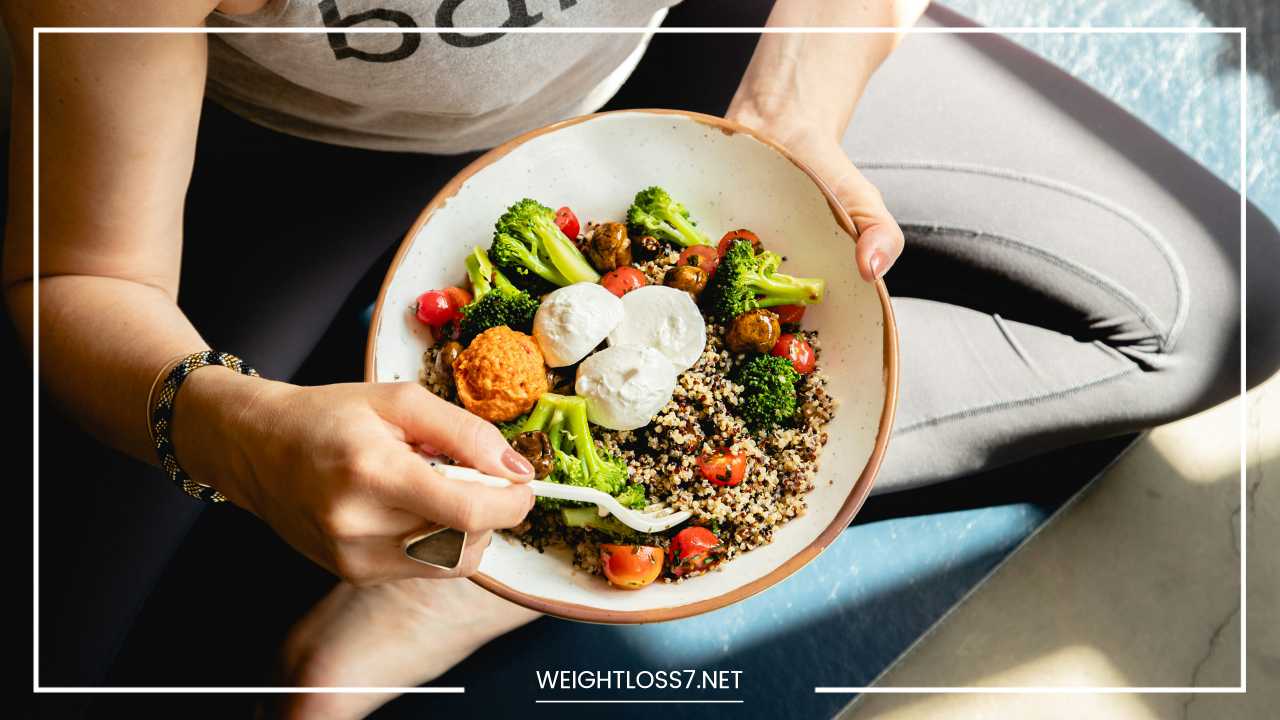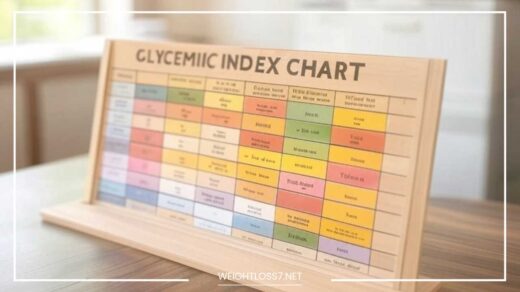How to Eat Healthy

Eat Healthy
How to Eat Healthy: A Practical Guide for Busy People
Eating healthy can feel overwhelming. Between busy schedules, conflicting information, and a world full of tempting treats, it’s easy to fall back on unhealthy habits.
But here’s the good news: you don’t need a complete diet overhaul to make a positive difference. In fact, small changes can lead to big improvements in your health and well-being.
This guide is designed for busy people who want to navigate the world of healthy eating without getting bogged down in complex details.
We’ll explore the core principles of a healthy diet, offer practical tips for meal planning and grocery shopping, and debunk some common myths.
The Power of a Balanced Plate
Imagine your plate divided into three sections. One-third should be filled with colorful fruits and vegetables. Another third should be whole grains like brown rice, quinoa, or whole-wheat bread.
The last third is for protein sources like lean meats, fish, beans, or lentils. This simple visual approach, known as the MyPlate method, ensures you’re getting a variety of nutrients your body needs.
Fruits and Vegetables: A Rainbow on Your Plate
Fruits and vegetables are packed with vitamins, minerals, fiber, and antioxidants. Aim for at least five servings a day, in a variety of colors. Here are some tips to increase your fruit and vegetable intake:
- Start your day with a fruit smoothie or chopped fruit with yogurt.
- Sneak veggies into your meals. Add spinach to scrambled eggs, grated zucchini to pasta sauce, or riced cauliflower to stir-fries.
- Keep pre-cut vegetables on hand for easy snacking.
- Frozen and canned fruits and vegetables are perfectly acceptable and often more affordable. Just watch out for added sugars and sodium in canned options.
Whole Grains: Fueling Your Body
Whole grains are a great source of complex carbohydrates, which provide sustained energy throughout the day.
They’re also high in fiber, which keeps you feeling fuller for longer and aids in digestion. Opt for brown rice over white, whole-wheat pasta over regular, and whole-wheat bread over white bread.
Protein Powerhouses
Protein is essential for building and repairing tissues, and it plays a role in hormone regulation and metabolism. Here are some tips for incorporating healthy protein sources into your diet:
- Choose lean cuts of meat like chicken breast, fish, or turkey.
- Incorporate plant-based protein sources like beans, lentils, tofu, and tempeh.
- Eggs are a complete protein source that can be enjoyed for breakfast, lunch, or dinner.
- Portion control is key. A typical serving of protein is about the size of your palm.
Fats: Not All Bad
Healthy fats are an essential part of a balanced diet. They promote healthy cell function, aid in nutrient absorption, and contribute to a feeling of satiety.
Focus on unsaturated fats found in avocados, nuts, seeds, and olive oil. Limit saturated fats found in fatty meats and processed foods, and avoid trans fats altogether.
Keep it Simple with Meal Planning
Planning your meals ahead of time is a game-changer for healthy eating. Here’s how to get started:
- Dedicate 30 minutes each week to plan your meals and create a grocery list.
- Consider dietary needs and preferences of everyone in your household.
- Plan meals that are quick and easy to prepare on busy weeknights.
- Leftovers can be your friend! Cook a larger batch and enjoy it for lunch the next day.
Grocery Shopping Strategies
Shopping with a plan sets you up for success. Here are some tips for navigating the grocery store:
- Shop the perimeter of the store, where you’ll find fresh produce, lean protein sources, and dairy products.
- Read food labels carefully. Pay attention to serving sizes, calories, and sugar content.
- Don’t be afraid to buy frozen or canned options when fresh isn’t available.
- Stock your pantry with healthy staples like whole grains, canned beans, and nuts.
- Limit processed foods, sugary drinks, and unhealthy snacks.
Debunking Common Myths
- Myth: All carbs are bad. Not true! Complex carbs found in whole grains are essential for energy.
- Myth: Fat-free is always healthy. Not necessarily. Healthy fats are good for you.
- Myth: Fruit is too sugary. While some fruits have natural sugar, they’re also packed with fiber and nutrients.
- Myth: I need expensive supplements to be healthy. A balanced diet should provide most of the nutrients you need.
Making Healthy Eating Sustainable
Healthy eating is a journey, not a destination. Here are some tips to make it a lasting lifestyle change:
- Focus on progress, not perfection. There will be days when you slip up. Don’t let setbacks derail your entire journey. Celebrate your small wins, like trying a new vegetable or making healthier choices at the grocery store. Remember, progress, not perfection, is key to long-term success.
- Don’t deprive yourself. Deprivation can lead to cravings and eventually, overeating. Allow yourself occasional treats in moderation. This will help you stay on track and prevent feelings of restriction.
- Cook more meals at home. This gives you more control over ingredients and portion sizes. Plus, cooking at home can be a fun and rewarding experience. Explore new recipes and involve family and friends in the process.
- Involve family and friends in healthy eating. Share meals and recipes with them. Encourage them to join you on your healthy eating journey. Having a support system can make a big difference.
- Find healthy alternatives to your favorite foods. Craving pizza? Try a whole-wheat crust with lean protein and veggie toppings. Love burgers? Make them at home with lean ground turkey or chicken and whole-wheat buns. There are delicious and healthy versions of almost any dish you can imagine.
- Don’t be afraid to experiment with new ingredients and recipes. This will keep your meals interesting and prevent boredom. There’s a whole world of healthy and flavorful food waiting to be discovered!
- Make healthy eating enjoyable. Set a nice table, play calming music, and savor your food. Eating should be a pleasurable experience, not a chore.
- Listen to your body. Eat when you’re hungry and stop when you’re full. Don’t force yourself to finish everything on your plate. Pay attention to your body’s hunger cues and learn to respect them.
- Drink plenty of water throughout the day. Water helps with digestion, keeps you hydrated, and can even help you feel fuller. Aim for eight glasses of water per day.
How to Eat Healthy: A Practical Guide for Busy People
- Don’t deprive yourself. Allow yourself occasional treats in moderation.
- Cook more meals at home. You have more control over ingredients and portion sizes.
- Involve family and friends in healthy eating. Share meals and recipes with them.
- Find healthy alternatives to your favorite foods. There are healthy versions of pizza, burgers, and pasta dishes.
- Don’t be afraid to experiment with new ingredients and recipes.
- Make healthy eating enjoyable. Set a nice table, play calming music, and savor your food.
- Listen to your body. Eat when you’re hungry and stop when you’re full.
- Drink plenty of water throughout the day. Water helps with digestion, keeps you hydrated, and can even help you feel fuller.
Healthy Eating on the Go
Busy schedules don’t have to derail your healthy eating goals. Here are some tips for staying on track when you’re on the go:
- Pack your lunch the night before. Include a protein source, whole grains, fruits, and vegetables.
- Keep healthy snacks on hand like nuts, seeds, fruits, and yogurt.
- Many restaurants offer healthy options. Look for grilled or baked dishes, and ask for sauces and dressings on the side.
- Take advantage of healthy grab-and-go options like pre-cut vegetables, single-serve yogurt parfaits, or pre-made salads.
Building a Healthy Relationship with Food
A healthy relationship with food is about more than just what you eat. It’s about mindfulness, balance, and enjoying the experience of eating. Here are some tips to cultivate a positive approach to food:
- Practice mindful eating. Pay attention to your hunger cues and avoid distractions while eating.
- Don’t use food as a reward or punishment.
- Focus on the positive aspects of healthy eating, like increased energy and better mood.
- Celebrate your non-scale victories, like trying a new healthy recipe or making healthier choices at restaurants.
Remember, you are not alone on this journey! There are countless resources available to help you on your path to healthy eating. Here are a few suggestions:
- Consult a registered dietitian for personalized advice.
- There are many healthy recipe websites and cookbooks available online and in libraries.
- Join a healthy eating support group or find an online community for motivation.
Appendix: Sample Meal Plans and Healthy Snack Ideas
Sample Meal Plans (one week):
Day 1:
- Breakfast: Oatmeal with berries and nuts
- Lunch: Salad with grilled chicken, whole-wheat bread, and a piece of fruit
- Dinner: Salmon with roasted vegetables and brown rice
Day 2:
- Breakfast: Greek yogurt with granola and sliced banana
- Lunch: Lentil soup with a whole-wheat roll and a side salad
- Dinner: Turkey stir-fry with brown rice and mixed vegetables
Day 3:
- Breakfast: Scrambled eggs with spinach and whole-wheat toast
- Lunch: Veggie burger on a whole-wheat bun with a side salad
- Dinner: Chicken fajitas with whole-wheat tortillas, grilled peppers and onions, and black beans
Day 4:
- Breakfast: Smoothie made with Greek yogurt, spinach, banana, and almond milk
- Lunch: Leftover chicken fajitas
- Dinner: Vegetarian chili with a side of whole-wheat cornbread
Day 5:
- Breakfast: Whole-wheat pancakes with fruit and a drizzle of maple syrup
- Lunch: Tuna salad sandwich on whole-wheat bread with a side of carrots and hummus
- Dinner: Shrimp scampi with whole-wheat pasta and steamed broccoli
Day 6:
- Breakfast: Whole-wheat toast with avocado and a fried egg
- Lunch: Chicken Caesar salad with a whole-wheat crouton
- Dinner: Baked tofu with roasted sweet potatoes and Brussels sprouts
Day 7:
- Breakfast: Breakfast burrito with scrambled eggs, beans, cheese, and salsa wrapped in a whole-wheat tortilla
- Lunch: Leftover baked tofu with sweet potatoes and Brussels sprouts
- Dinner: Vegetarian lasagna with a side salad
Healthy Snack Ideas:
- Fruits and vegetables with a dollop of nut butter
- Air-popped popcorn
- Yogurt with berries and granola
- Hard-boiled eggs
- Cottage cheese with pineapple chunks
- Edamame
- Carrot sticks and hummus
- Trail mix (made with nuts, seeds, and dried fruit)
- Apple slices with cheese
- Whole-wheat crackers with avocado slices
Remember, these are just samples. Feel free to adjust them based on your preferences and dietary needs.
Final Word
Eating healthy doesn’t have to be complicated or time-consuming. By making small changes and focusing on progress, you can create a sustainable eating pattern that fuels your body and mind. Embrace the journey, experiment with new flavors, and enjoy the delicious world of healthy eating!

















